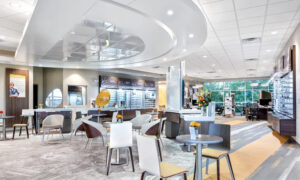
August 5, 2015
You will be seeing an increasing number of patients with myopia, according to the National Eye Institute, which projects more than 35,000,000 myopic people in the U.S., by 2030, and more than 40,000,000 by 2050.
Patients with vision difficulties may soon be turning to something closer to home than their eye doctor–their smartphone.
“A remarkable two dollar smartphone attachment that can measure eyesight,” read an article title in 2011. The Boston based company eyeNETRA had developed a smartphone attachment that cost $2. When the attachment was combined with software on a smartphone, the result was a measurement of myopia or hyperopia. “Imagine strolling through the mall and spending $5 to get your annual eye exam or to update your prescription,” the article went on to state.
Before you get too upset, realize here we are years later and the $5 mall eye exam has not yet happened. But before you get too comfortable, also realize that the “smartphone eye exam” has never really gone away, nor will it go away. Clever people are working on how to do it better all the time.
Here are several companies and links to the products they’ve created:
PEEK
Belant Fargo
Rocktime Ltd
Blink
There’s even a TED Talk on “Get your next eye exam on a smartphone”
Expect to see more companies coming out with variations on this theme.
The real question is: what are you going to do in your practice about this? The railroads thought they were in the railroad business and did not realize they were in the transportation business. As new technologies developed, the railroads stayed in the railroad business. Look at them today.
So back to the original question: What are you going to do about this new technology? Are you going to embrace or resist it? Can you think of ways to use this new technology with your patients to enhance the care you deliver, or will you turn your back on it and pretend it doesn’t exist?
This is not a new problem. We’ve been here before. When autorefractors first came out, we had these very same discussions. Yet here we are years later, and most of us have incorporated autorefraction into our exam sequences very successfully. Our challenge is to do the same with the “smartphone eye exam” technology.
If you truly understand evolution, it is not survival of the strongest; it is really survival of those who can adapt the best. Take this week to brainstorm how you can adapt your practice to this new technology.

























